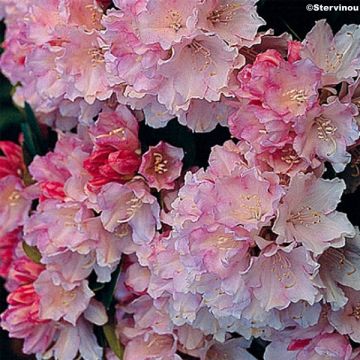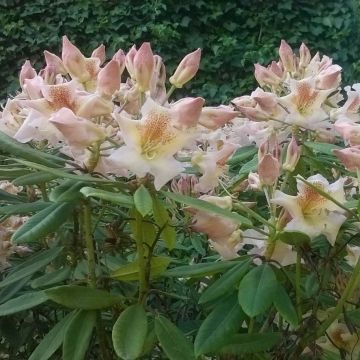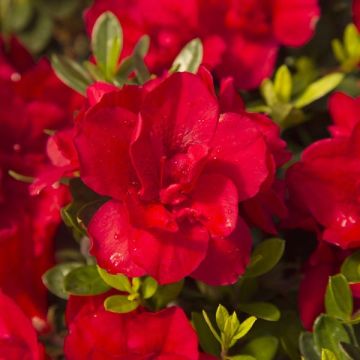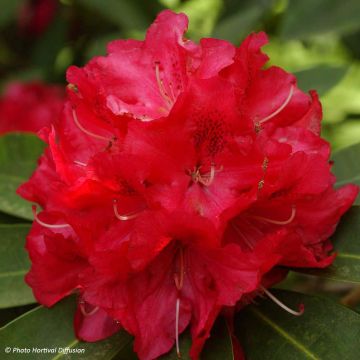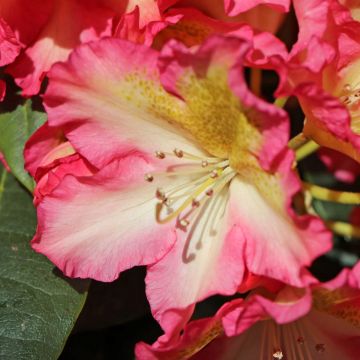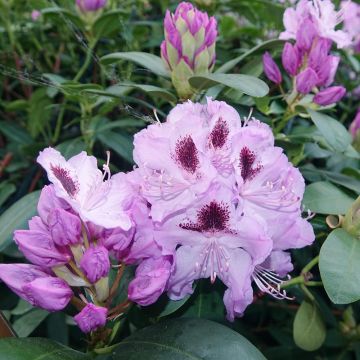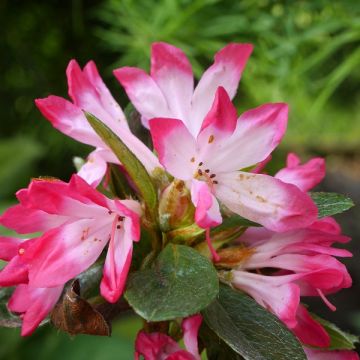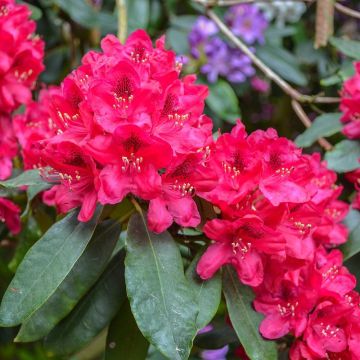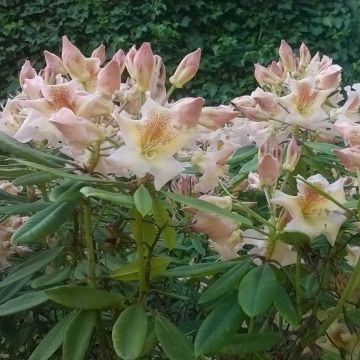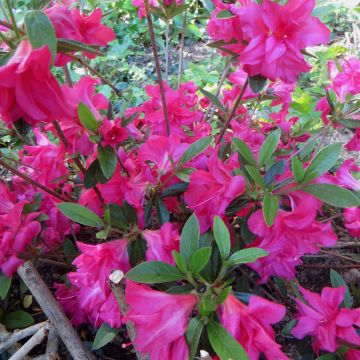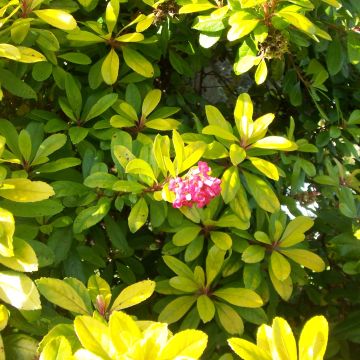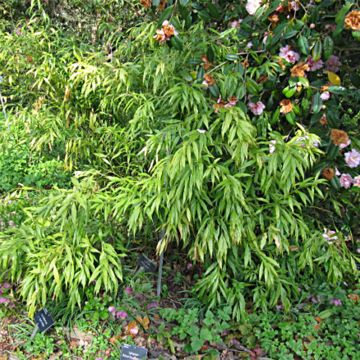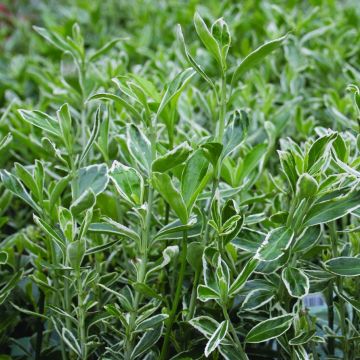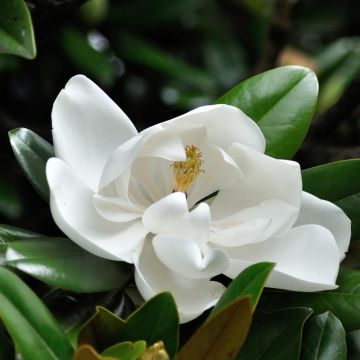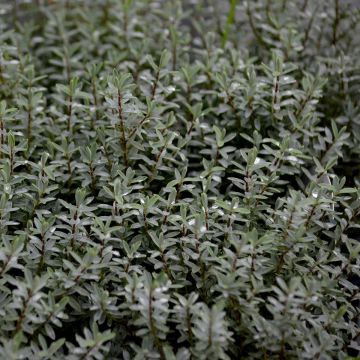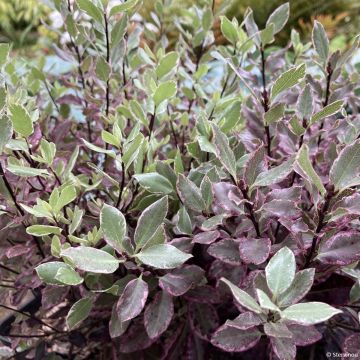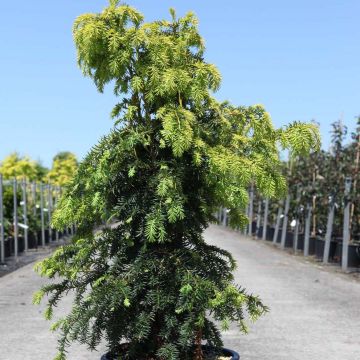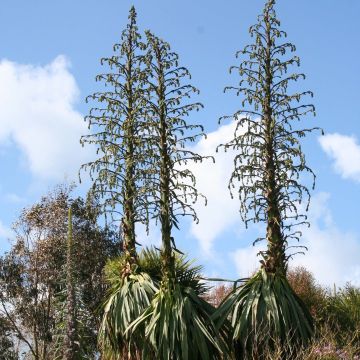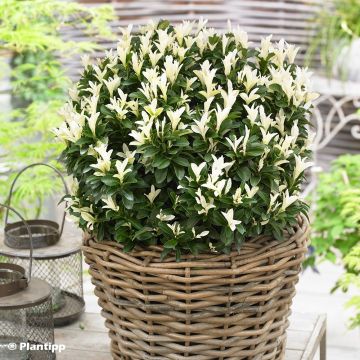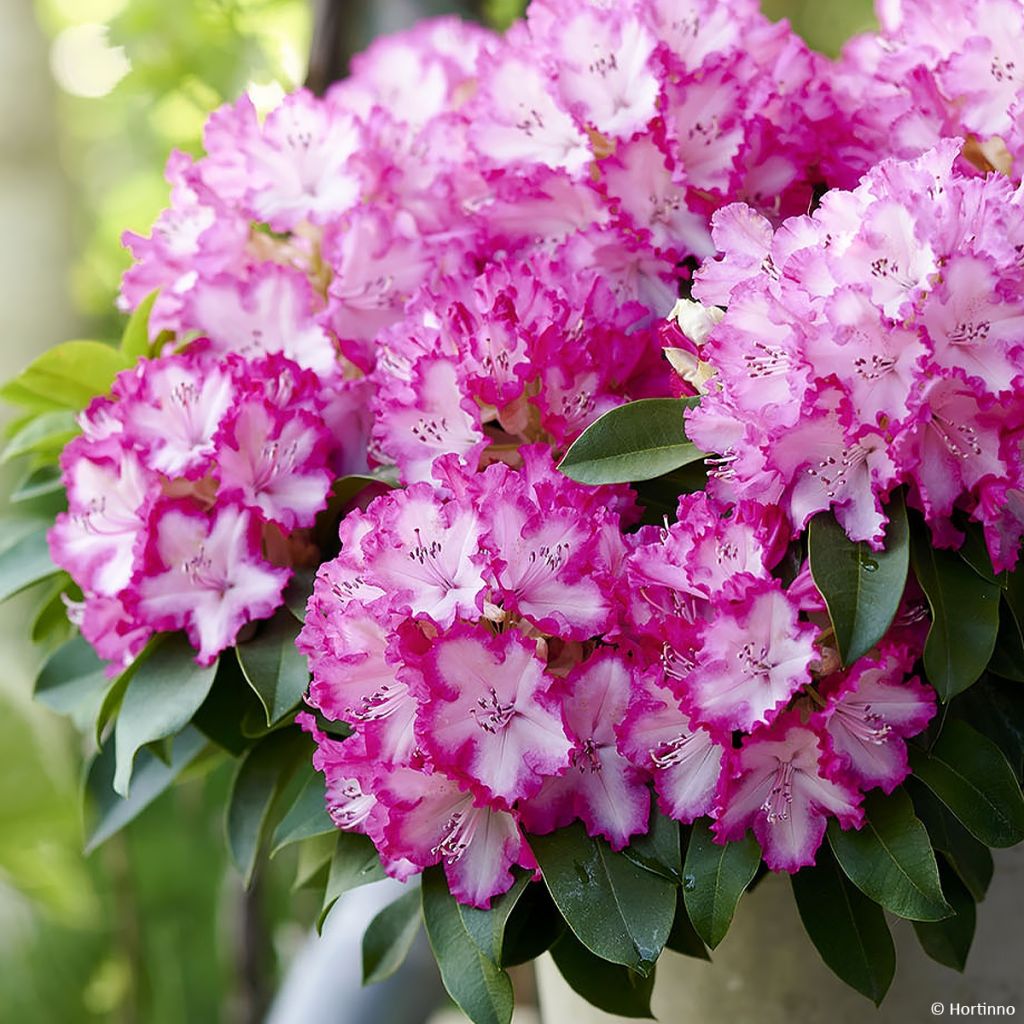

Rhododendron XXL®
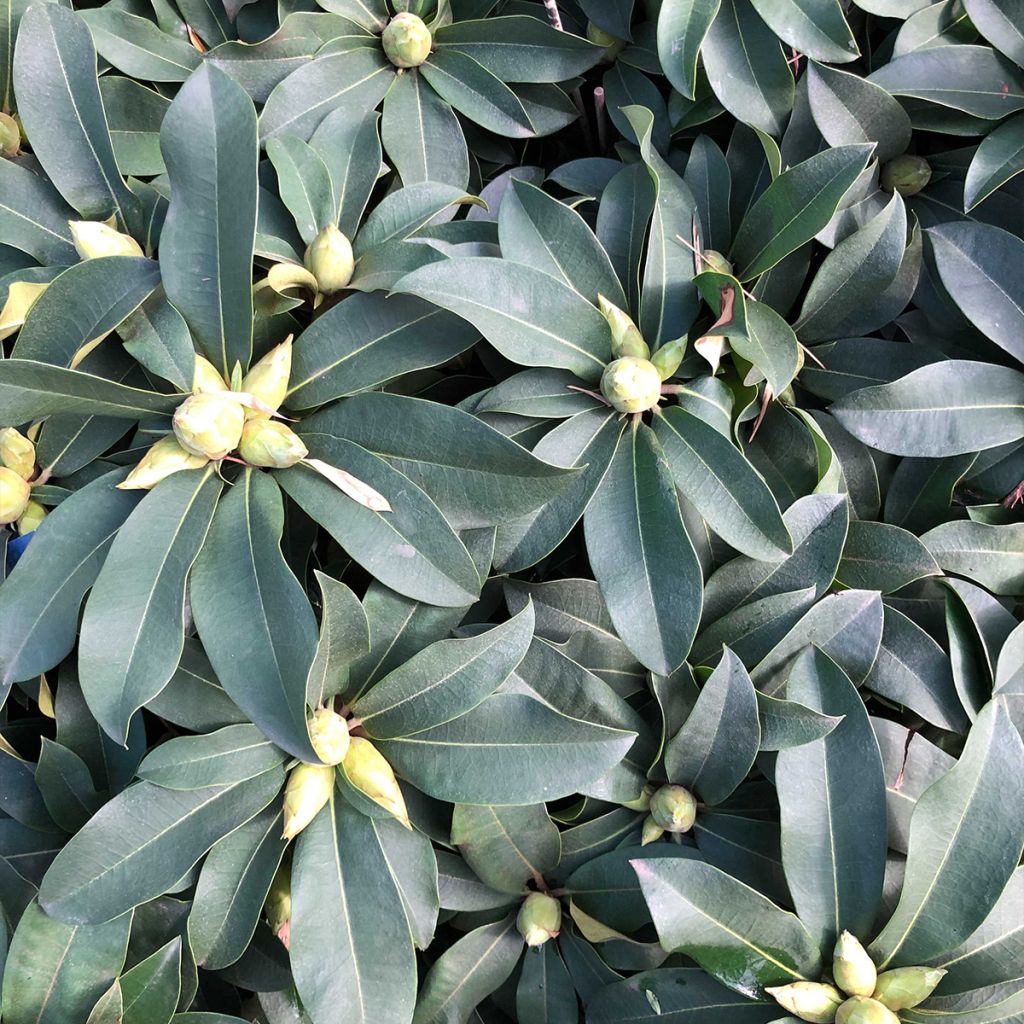

Rhododendron XXL®
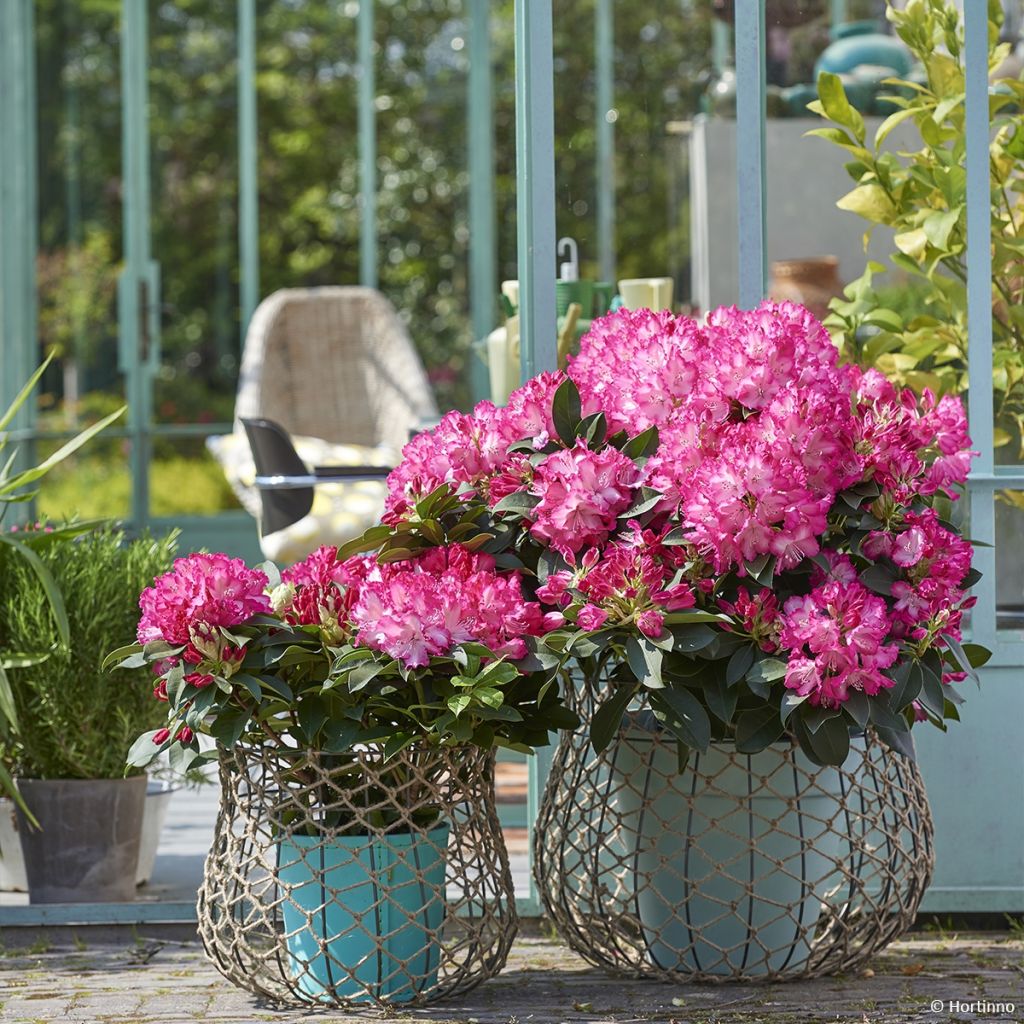

Rhododendron XXL®
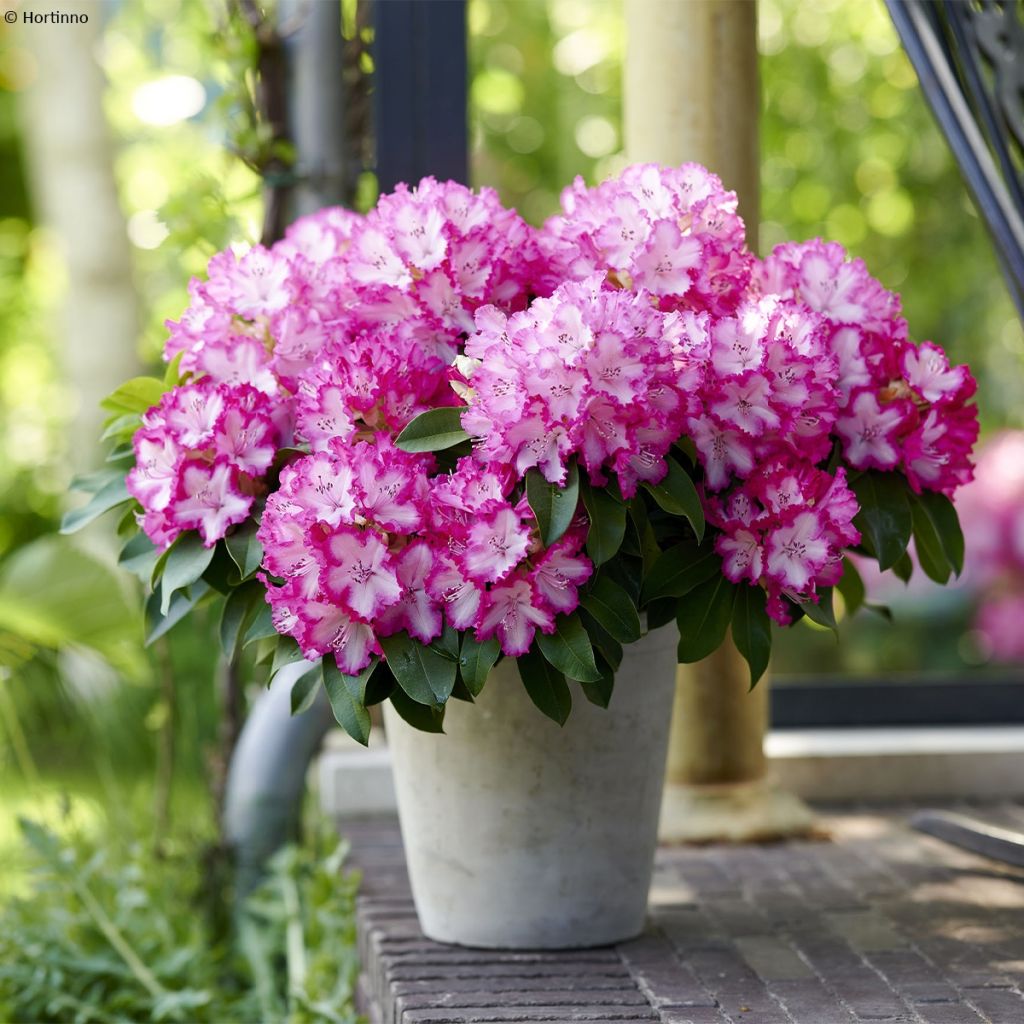

Rhododendron XXL®
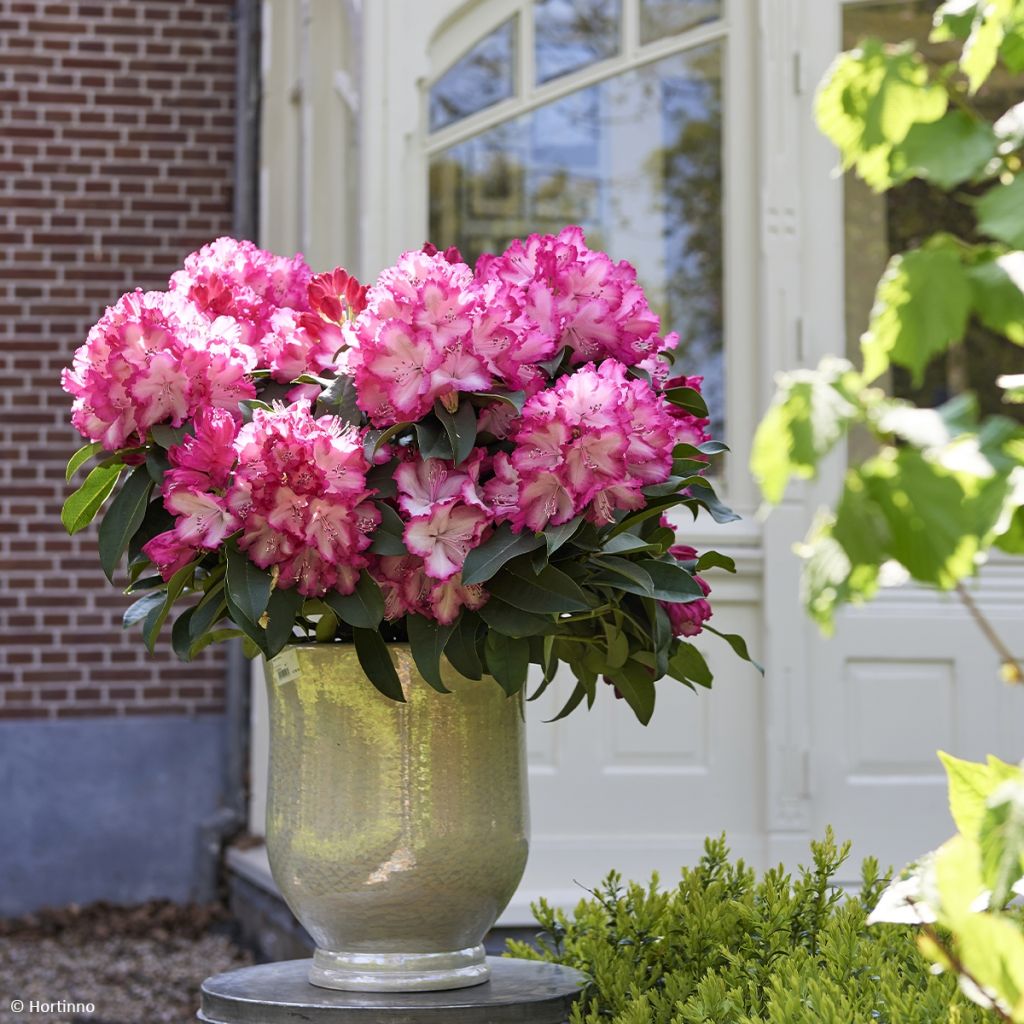

Rhododendron XXL®
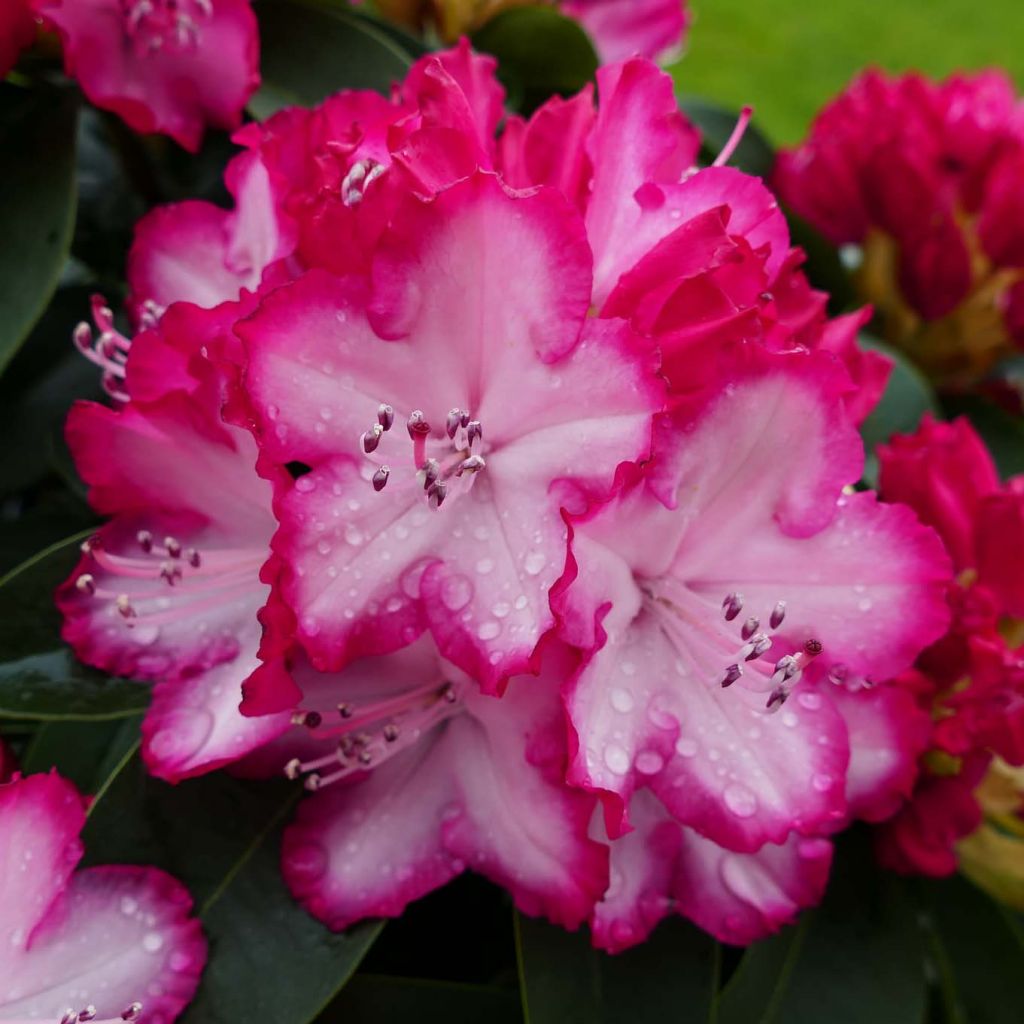

Rhododendron XXL®
Rhododendron XXL
Rhododendron XXL®
Rhododendron
This item cannot be shipped to the selected country
Delivery charge from €5.90
More information
Schedule delivery date,
and select date in basket
This plant carries a 24 months recovery warranty
More information
We guarantee the quality of our plants for a full growing cycle, and will replace at our expense any plant that fails to recover under normal climatic and planting conditions.
From €5.90 for pickup delivery and €6.90 for home delivery
Express home delivery from €8.90.

Does this plant fit my garden?
Set up your Plantfit profile →
Description
Rhododendron 'XXL' is a recent hybrid that stands out from all other varieties due to its long flowering period and the size of its inflorescences. Its huge clusters of large frilled bicoloured flowers, with a wide white throat, bordered with bright carmine pink, bloom for at least 4 weeks in April-May, engulfing its dark green foliage. Spectacular when in bloom, this compact evergreen bush with slow growth is well suited for small spaces and container gardening. In shade or partial shade, it will enhance many other ericaceous plants.
Rhododendrons are plants belonging to the Ericaceae family, just like heathers, preferring in the vast majority of cases lime-free soils, with an acidic tendency, and humid climates. Rhododendron 'XXL' is a Belgian variety resulting from over 10 years of hybridization and selection, recently introduced to the horticultural market. It belongs to the selection of hardy large-flowered rhododendron hybrids. Its habit is dense, rounded, well-branched, as wide as it is tall. At maturity, its average dimensions will rarely exceed 1.50 m (5 ft) in all directions. Its growth is slow, so it will rarely exceed 1.20 m (4 ft) at the age of 10. Its foliage, evergreen, is quite unusual and dense, arranged in clusters on the branches. It consists of evergreen oval, leathery, smooth leaves, of dark green colour with a matte finish. Flowering generally occurs in April-May, but it can start earlier in mild climates. It lasts on average a week longer than that of other varieties and its opulence truly overwhelms the bush: grouped in huge round clusters, very large funnel-shaped flowers bloom. The flower bud has an intense carmine red hue, then opens up into a thick-textured bicoloured corolla, with a wide white throat contrasting wonderfully with a frilled border of bright carmine pink that fades over time.
Rhododendron 'XXL' deserves a prominent place in the garden, or on the terrace and balcony, planted in a carefully chosen large pot. With its extraordinary and highly vibrant flowering, this variety brings a real novelty to these exclusively acid and moist soil shrubs, allowing it to catch the eye in semi-shaded spaces. It can be planted alone, standing out in a bed of ferns, blue or variegated hostas. It pairs well with Pieris, Heathers, Kalmias, Skimmia, Azaleas and Japanese Maples, as well as other rhododendrons from the same group to create superb patchworks of textures and colours that evolve throughout the year. Growing it in containers requires regular watering with non-lime water and specific fertilizer for ericaceous plants.
Large rhododendrons can also be used to create magnificent hedges, alone or with camellias or mimosas (in mild climates), for example.
Report an error about the product description
Rhododendron XXL in pictures
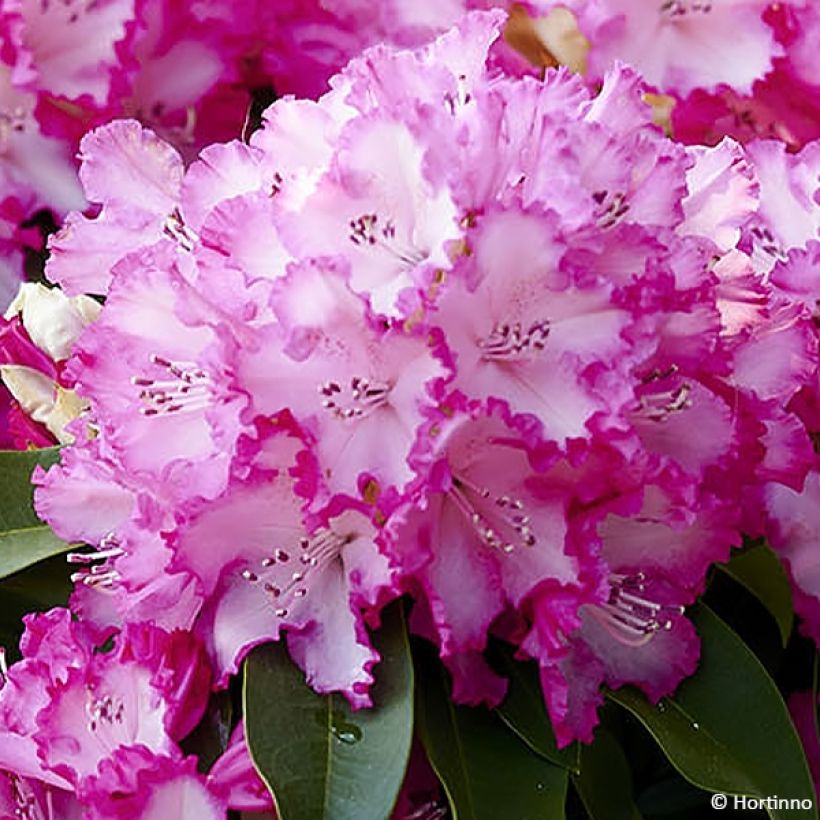

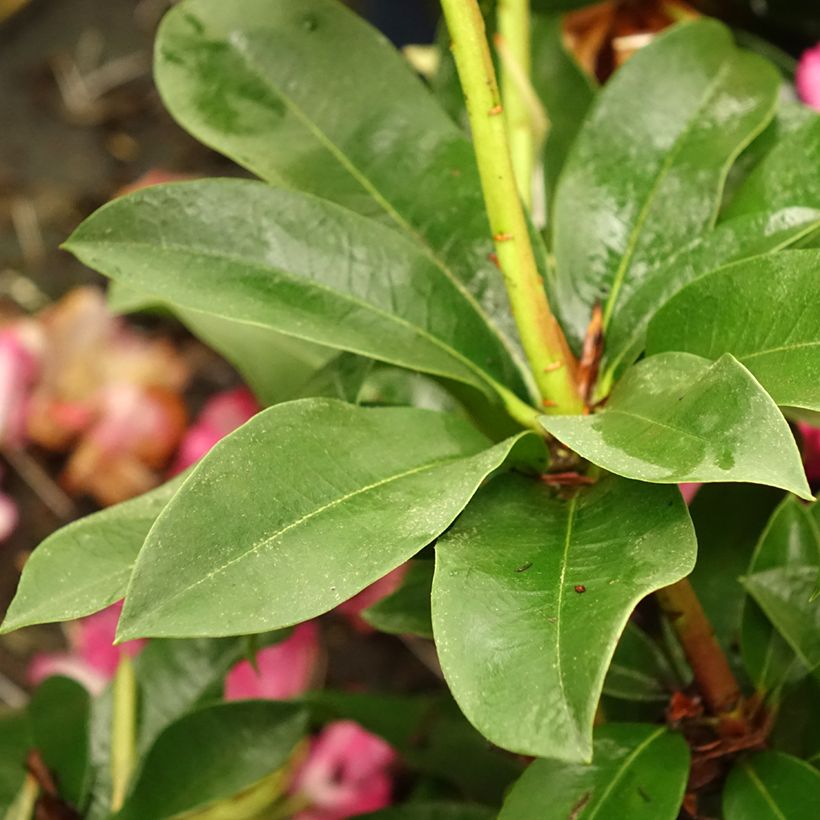

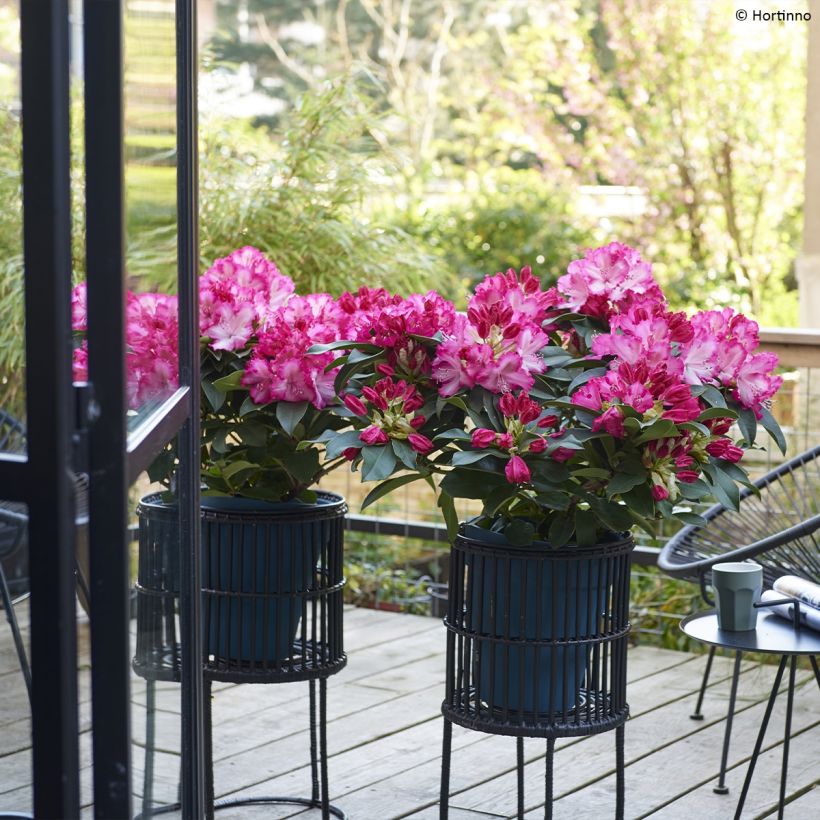

Plant habit
Flowering
Foliage
Botanical data
Rhododendron
XXL®
Ericaceae
Rhododendron
Cultivar or hybrid
Other Small Rhododendron
Planting and care
Plant the 'XXL' Rhododendron in a semi-shaded or shaded position, protected from cold and drying winds, in a moist, humus-rich, and light soil, with a tendency towards acidity or neutrality. Like all ericaceous plants, it does not tolerate chalky soils or heavy soils that become waterlogged in winter. If the soil remains moist in summer, this rhododendron can also tolerate a partially shaded position in the morning sun. Avoid planting at its base, as its shallow roots do not tolerate competition from other plants, especially for water resources.
Dig a hole three times larger than the pot. Soak the root ball in lime-free water and plant the bush at the collar level in a mixture composed of leaf compost, gravel or volcanic rock, and loam. Water thoroughly and keep the soil moist in the summer. Azaleas and Rhododendrons have a shallow root system. As a result, they are susceptible to long periods of drought. It is therefore advisable to enrich the soil with humus and provide abundant watering during dry periods. Additionally, their root system is not very strong, which is why it is essential to lighten heavy soils with draining materials (gravel, volcanic rock, clay pellets) when planting. Apply a mulch of shredded pine bark around the base of the bush every spring to retain soil moisture and maintain an acidic pH.
Maintenance involves removing faded flowers in summer and cutting out dead branches. Azaleas and Rhododendrons can sometimes be attacked by weevils that eat the edges of leaves and rootlets, as well as the infamous "rhododendron beetle" which rarely causes significant damage. Effective biological solutions exist today against weevils. Yellowing of leaves (chlorosis) in Rhododendrons indicates poor iron assimilation in the soil and can lead to premature death of the plant. While limestone is often the cause, poorly drained soil or planting too deep can also explain the phenomenon.
Rhododendrons thrive in cooler climates when planted in limestone-free soil and a humid environment. Their cultivation in hotter and drier climates is often doomed to failure in the long run, despite all the efforts made to acclimatize them.
Planting period
Intended location
Care
-
, onOrder confirmed
Reply from on Promesse de fleurs
Evergreen shrubs
Haven't found what you were looking for?
Hardiness is the lowest winter temperature a plant can endure without suffering serious damage or even dying. However, hardiness is affected by location (a sheltered area, such as a patio), protection (winter cover) and soil type (hardiness is improved by well-drained soil).

Photo Sharing Terms & Conditions
In order to encourage gardeners to interact and share their experiences, Promesse de fleurs offers various media enabling content to be uploaded onto its Site - in particular via the ‘Photo sharing’ module.
The User agrees to refrain from:
- Posting any content that is illegal, prejudicial, insulting, racist, inciteful to hatred, revisionist, contrary to public decency, that infringes on privacy or on the privacy rights of third parties, in particular the publicity rights of persons and goods, intellectual property rights, or the right to privacy.
- Submitting content on behalf of a third party;
- Impersonate the identity of a third party and/or publish any personal information about a third party;
In general, the User undertakes to refrain from any unethical behaviour.
All Content (in particular text, comments, files, images, photos, videos, creative works, etc.), which may be subject to property or intellectual property rights, image or other private rights, shall remain the property of the User, subject to the limited rights granted by the terms of the licence granted by Promesse de fleurs as stated below. Users are at liberty to publish or not to publish such Content on the Site, notably via the ‘Photo Sharing’ facility, and accept that this Content shall be made public and freely accessible, notably on the Internet.
Users further acknowledge, undertake to have ,and guarantee that they hold all necessary rights and permissions to publish such material on the Site, in particular with regard to the legislation in force pertaining to any privacy, property, intellectual property, image, or contractual rights, or rights of any other nature. By publishing such Content on the Site, Users acknowledge accepting full liability as publishers of the Content within the meaning of the law, and grant Promesse de fleurs, free of charge, an inclusive, worldwide licence for the said Content for the entire duration of its publication, including all reproduction, representation, up/downloading, displaying, performing, transmission, and storage rights.
Users also grant permission for their name to be linked to the Content and accept that this link may not always be made available.
By engaging in posting material, Users consent to their Content becoming automatically accessible on the Internet, in particular on other sites and/or blogs and/or web pages of the Promesse de fleurs site, including in particular social pages and the Promesse de fleurs catalogue.
Users may secure the removal of entrusted content free of charge by issuing a simple request via our contact form.
The flowering period indicated on our website applies to countries and regions located in USDA zone 8 (France, the United Kingdom, Ireland, the Netherlands, etc.)
It will vary according to where you live:
- In zones 9 to 10 (Italy, Spain, Greece, etc.), flowering will occur about 2 to 4 weeks earlier.
- In zones 6 to 7 (Germany, Poland, Slovenia, and lower mountainous regions), flowering will be delayed by 2 to 3 weeks.
- In zone 5 (Central Europe, Scandinavia), blooming will be delayed by 3 to 5 weeks.
In temperate climates, pruning of spring-flowering shrubs (forsythia, spireas, etc.) should be done just after flowering.
Pruning of summer-flowering shrubs (Indian Lilac, Perovskia, etc.) can be done in winter or spring.
In cold regions as well as with frost-sensitive plants, avoid pruning too early when severe frosts may still occur.
The planting period indicated on our website applies to countries and regions located in USDA zone 8 (France, United Kingdom, Ireland, Netherlands).
It will vary according to where you live:
- In Mediterranean zones (Marseille, Madrid, Milan, etc.), autumn and winter are the best planting periods.
- In continental zones (Strasbourg, Munich, Vienna, etc.), delay planting by 2 to 3 weeks in spring and bring it forward by 2 to 4 weeks in autumn.
- In mountainous regions (the Alps, Pyrenees, Carpathians, etc.), it is best to plant in late spring (May-June) or late summer (August-September).
The harvesting period indicated on our website applies to countries and regions in USDA zone 8 (France, England, Ireland, the Netherlands).
In colder areas (Scandinavia, Poland, Austria...) fruit and vegetable harvests are likely to be delayed by 3-4 weeks.
In warmer areas (Italy, Spain, Greece, etc.), harvesting will probably take place earlier, depending on weather conditions.
The sowing periods indicated on our website apply to countries and regions within USDA Zone 8 (France, UK, Ireland, Netherlands).
In colder areas (Scandinavia, Poland, Austria...), delay any outdoor sowing by 3-4 weeks, or sow under glass.
In warmer climes (Italy, Spain, Greece, etc.), bring outdoor sowing forward by a few weeks.

































